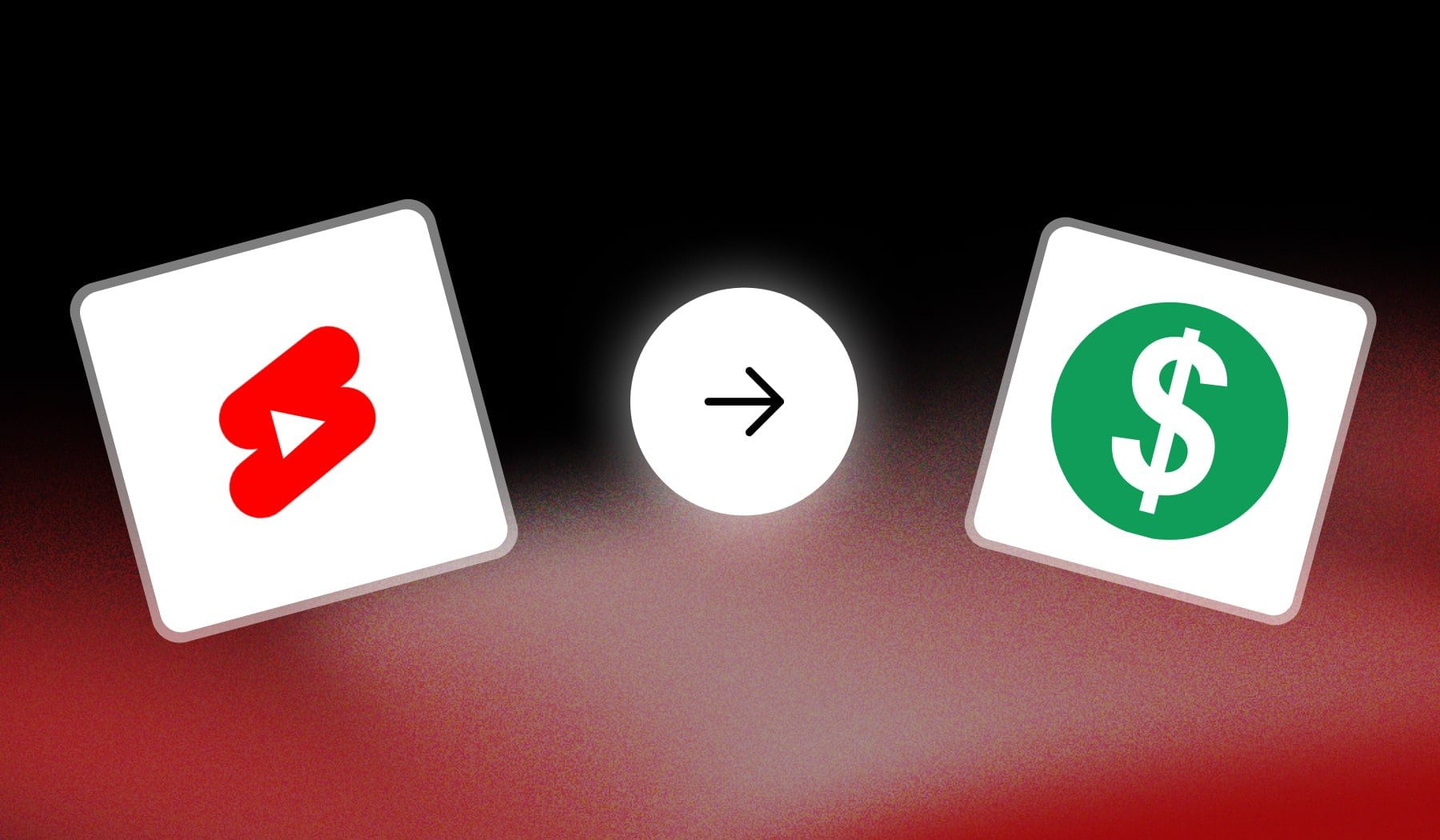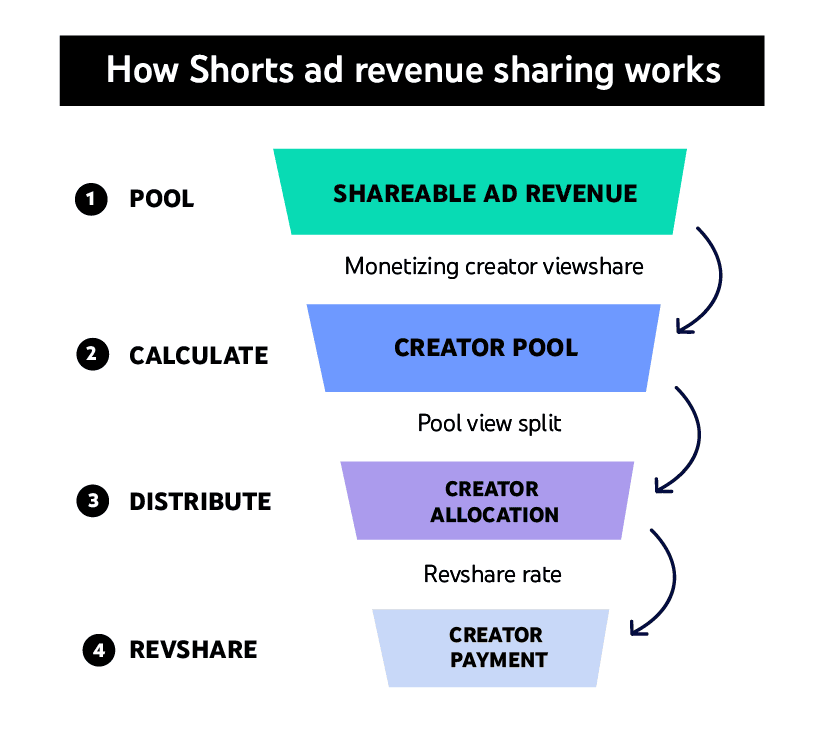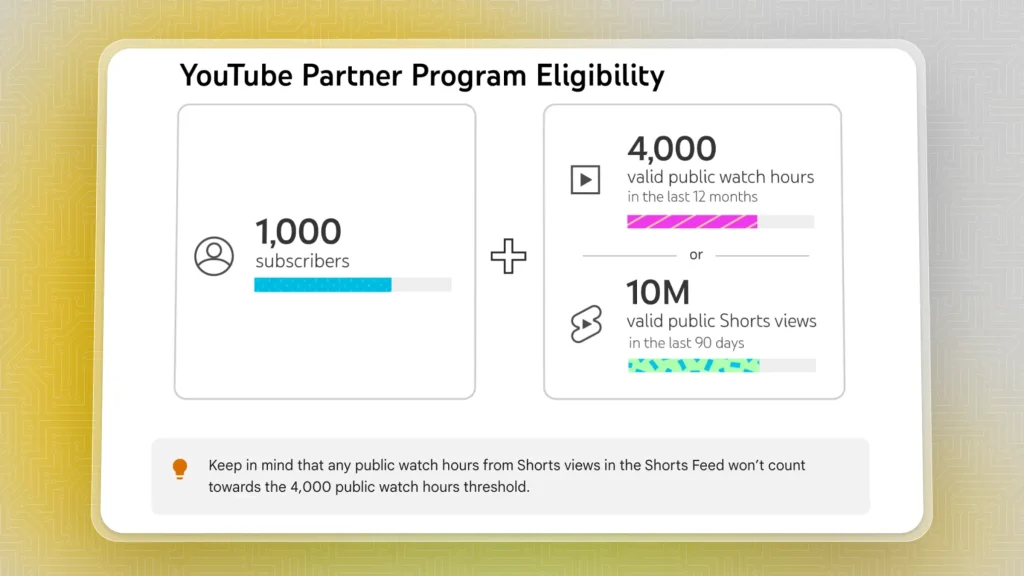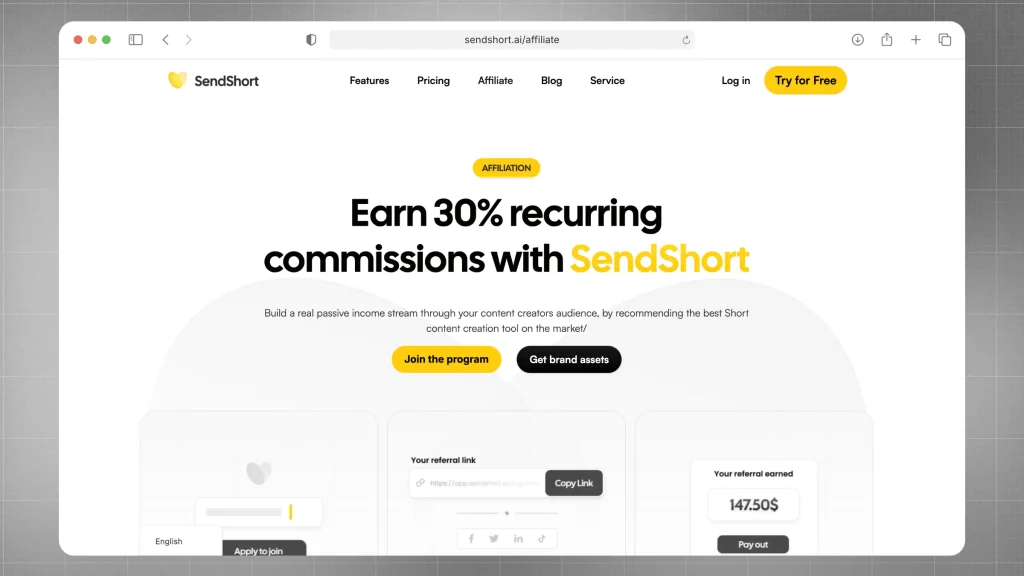
To get monetized on YouTube Shorts, apply for the YouTube Partner Program after you have 1k subscribers and 4k watch hours.
This guide shows you everything there is to know about making money with YouTube Shorts.

Monetization on YouTube Shorts lets creators earn revenue through ads and other features specific to Shorts. Since YouTube Shorts are primarily vertical, short-form videos designed for quick consumption, their ad revenue model differs from traditional, longer YouTube videos.
Beyond ads, YouTube Shorts monetization also includes features like Super Thanks, where viewers can donate to support creators directly, and the potential to leverage YouTube’s overall monetization strategy, such as channel memberships for exclusive content and perks. Creators need to meet eligibility requirements, like joining the YouTube Partner Program (YPP) by reaching 1,000 subscribers and 10 million views on Shorts in the past 90 days. This evolution in monetization has opened a new income stream for creators who focus on short-form content, expanding YouTube’s support for diverse content formats.
You can get monetized on YouTube Shorts through the YouTube Partner Program if you meet the eligibility criteria:
Additionally, YouTube offers a Shorts Fund to reward creators based on their Shorts performance.

| Requirement | Details |
|---|---|
| Subscriber Count | At least 1k subscribers |
| Shorts Views | 10M Shorts views in the last 90 days |
| Policies | Adhere to all YouTube’s policies and guidelines |
| Community Guideline | No active community guideline strikes |
| Two-Step Verification | Enable two-step verification |
| YPP | Apply for YPP through YouTube Studio |
The YPP is essentially your best option.
However, it’s pretty hard getting in if you’ve just created an account. Though, a good side of the YPP is that it enables you to monetize your long-form videos as well.

Earning ad revenue from YouTube Shorts requires meeting specific standards that ensure quality content and engagement. Here’s a more detailed look at eligibility requirements and how revenue works:
To monetize content through Shorts, creators first need to qualify for the YPP, which opens the door to ad revenue and other monetization features:
YouTube’s monetization policies are strict to ensure a safe, advertiser-friendly platform:
Shorts that contain copyrighted music, video clips, or images not cleared for commercial use will not qualify for ad revenue.
YPP is available in most countries, but it’s best to confirm that the program is accessible in your location. This may impact creators aiming for eligibility in countries where the program isn’t currently supported.
Keep Learning: Have a look at YouTube’s YPP availability guide.
Shorts ad revenue works differently from traditional long-form videos:
To remain eligible, channels must maintain a good standing with YouTube’s policies. Repeated violations, community guideline strikes, or spamming may result in suspension from YPP.
By meeting these requirements, creators can earn ad revenue from YouTube Shorts and benefit from additional revenue streams designed to support content-focused growth on the platform.

What It Is: Super Thanks is a feature that allows fans to directly support creators by purchasing a “thanks” on a video, essentially a paid comment.
How It Works: Viewers can choose from several payment tiers to “tip” creators. When someone sends a Super Thanks, a highlighted comment appears in the Shorts’ comment section, helping creators earn extra income directly from fan engagement.
What It Is: Brands are increasingly reaching out to creators for sponsored content due to Shorts’ popularity and engagement.
How It Works: Creators promote a brand’s product or service within their Shorts, either through product placements, shoutouts, or themed content. The income from sponsorships can vary widely based on the creator’s niche, viewership, and engagement rates.

What It Is: Creators can include affiliate links within their Shorts descriptions or in a pinned comment, encouraging viewers to purchase products or services.
How It Works: Affiliate marketing provides a commission every time a viewer clicks on the link and makes a purchase. Many creators leverage popular products or brands that resonate with their audience.
Popular Programs: SendShort and Amazon Affiliate widely used affiliate programs for creators across niches.
Curious to find out more about this? Have a look at our guide on the best affiliate programs for creators, where we explain every best programs for content creators!

What It Is: YouTube offers channel memberships to fans who pay a monthly fee for exclusive perks.
How It Works: Membership perks can include exclusive content, live streams, badges, or emojis.
While membership was traditionally geared toward long-form content, creators can promote their membership perks in Shorts to drive more sign-ups.
What It Is: The shopping feature lets creators link products directly in their Shorts, making it easy for viewers to shop for products without leaving YouTube.
How It Works: Eligible creators can tag products in Shorts, whether it’s their own merch or affiliated products, creating a seamless shopping experience.
Who It’s Best For: Creators with an established audience or those who sell physical or digital products often see significant benefits from the shopping feature.
What It Is: Many creators use external platforms like Patreon, Ko-fi, or Buy Me a Coffee to earn support from their community.
How It Works: Creators can promote their Patreon or other fan support platforms in Shorts descriptions or pinned comments, encouraging viewers to support them financially in exchange for exclusive perks or content.
Advantages: These platforms offer flexible monetization for creators who don’t qualify for YPP or those who want to engage fans with unique content on an external platform.

Between $0.01 and $0.06 is how much you can get for 1,000 views on YouTube Shorts. However, this depends on your target audience (e.g. where your Shorts are most viewed).
Yes, you can earn money from ads on YouTube Shorts, but the revenue is generally lower compared to regular YouTube videos due to shorter ad durations and different ad formats.
YouTube also has a separate revenue-sharing system for Shorts, including the YouTube Shorts Fund.
Yes, you can monetize YouTube Shorts without reaching 1,000 subscribers by participating in the YouTube Partner Program or the YouTube Shorts Fund.
However, for standard ad revenue through the Partner Program, you generally need at least 1,000 subscribers and 4,000 watch hours.
Thanks a lot for reading this,
David Ch
Head of the Editing Team at SendShort